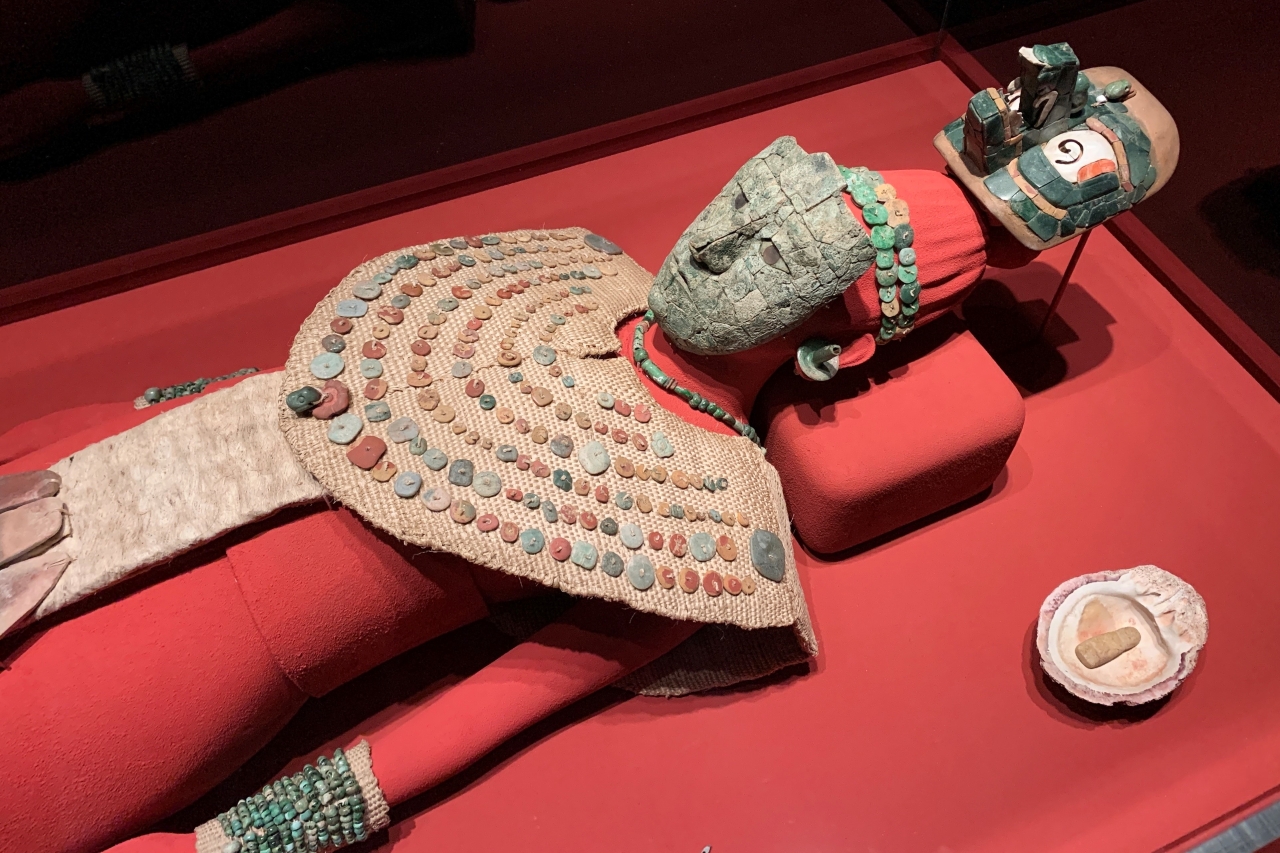Tokyo National Museum
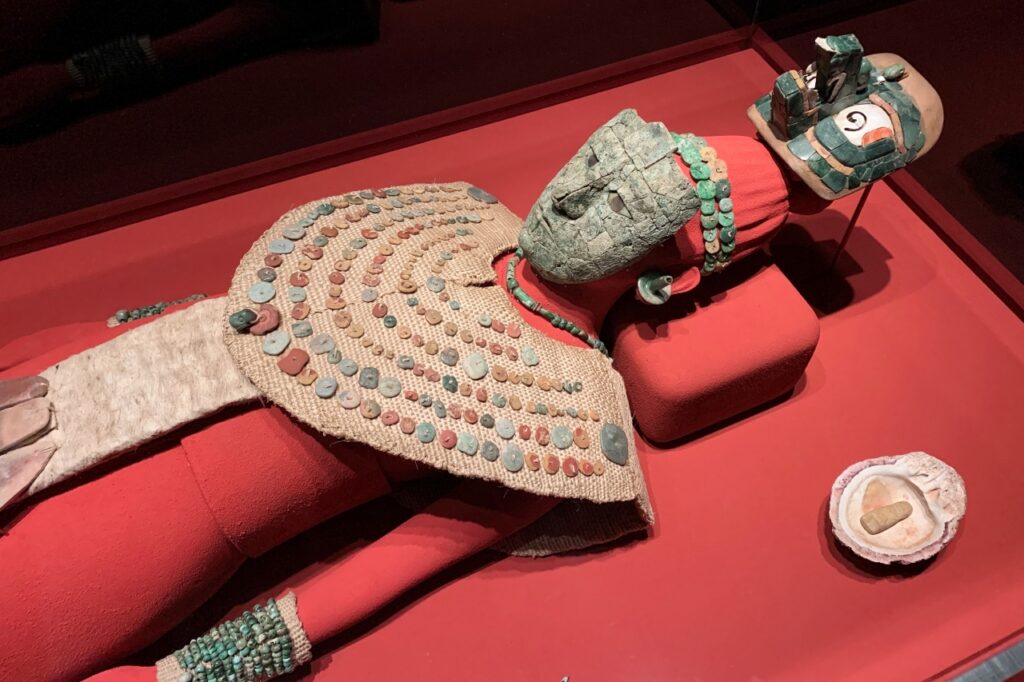
A special exhibition "Ancient Mexico – Maya, Aztec, Teotihuacan", which introduces the treasures of three civilizations representing ancient Mexico, will be held from Friday, June 16, 2023 to Sunday, September 3, 2023 at the Tokyo National Museum. Currently being held at the museum (Ueno, Tokyo).


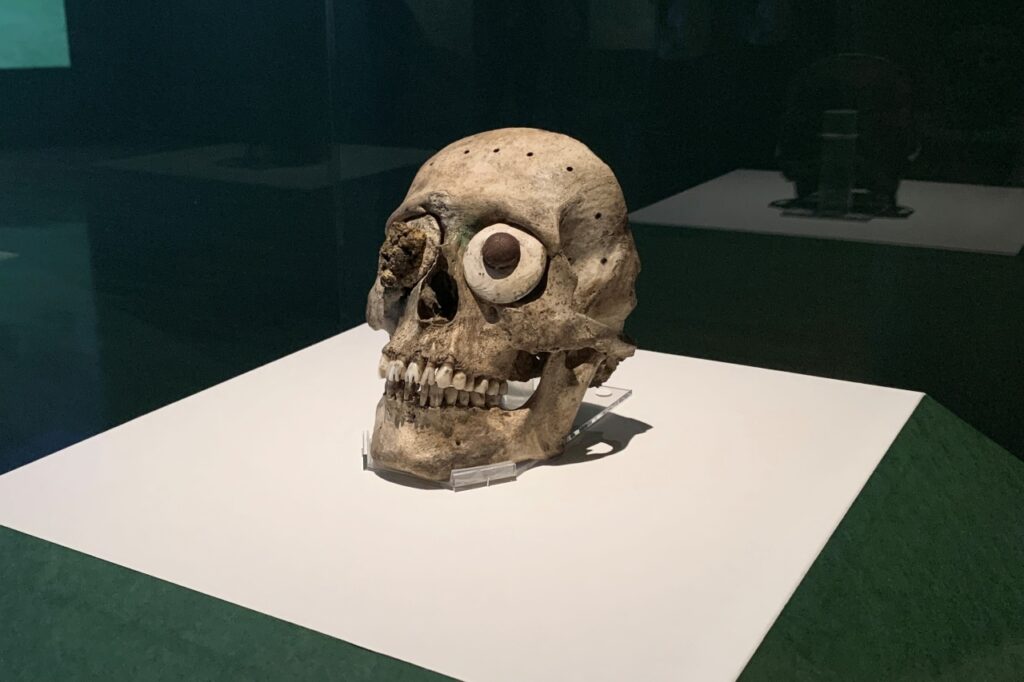
This exhibition will focus on the three civilizations representing Mesoamerica ( the Maya, Aztec, and Teotihuacan civilizations that shared cultural elements and prospered in parts of Mexico and Central America until the Spanish invasion in the 16th century). Focused.
About 140 valuable excavated items such as inscriptions and reliefs and archaeological relics carefully selected from major museums in Mexico are introduced along with the results of recent excavations. We will explore the depth and charm of the ancient Mexican civilization, such as the unique world view and the beauty of molding created from the diverse natural environment.
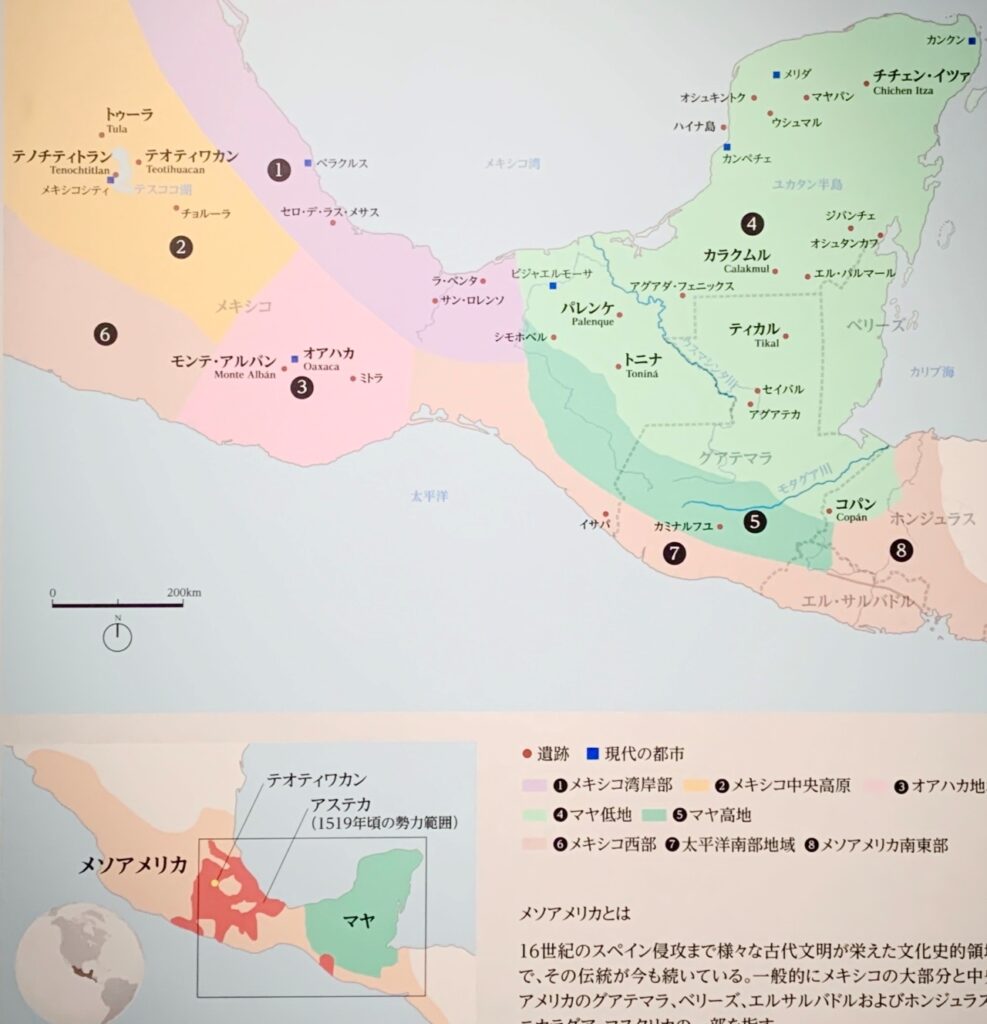
The exhibition consists of four chapters : "An Invitation to Ancient Mexico", "Teotihuacan: City of the Gods", "Maya: The Rise and Fall of City-States", and "Aztec: The Great Temple of Tenochtitlan".
Chapter 1 "Invitation to Ancient Mexico"
Chapter 1, "An Invitation to Ancient Mexico," is a cross-sectional exhibition of works based on common themes of the three civilizations, such as "corn," "celestial bodies and calendars," "ball games," and "human sacrifices," as well as images of the ruins of each civilization. It is an introductory part that conveys the world view of the whole ancient Mexico through.
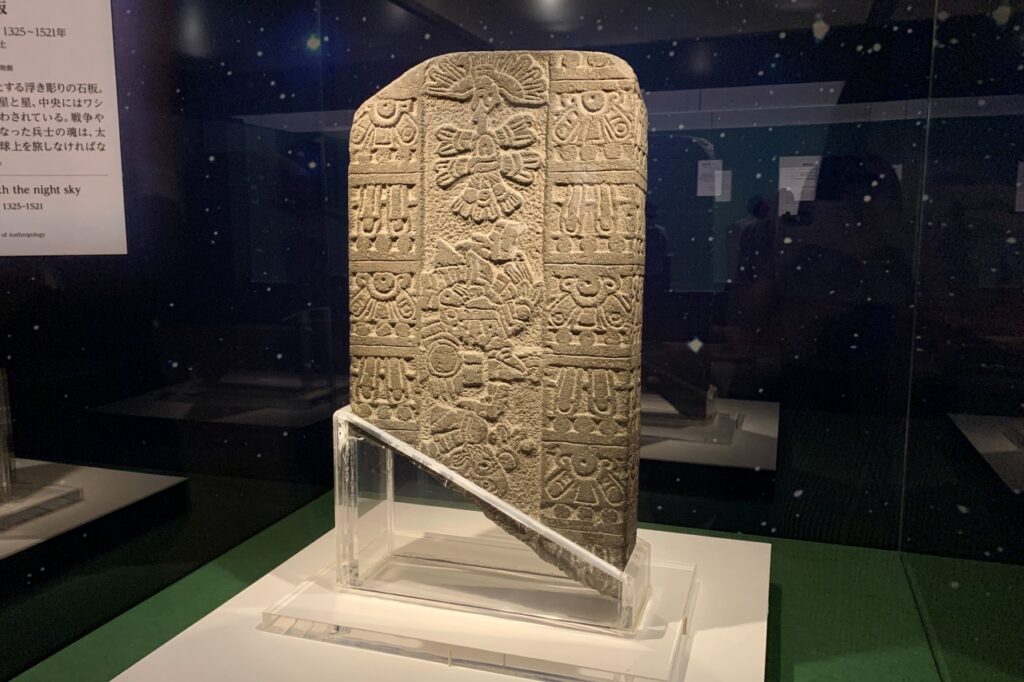
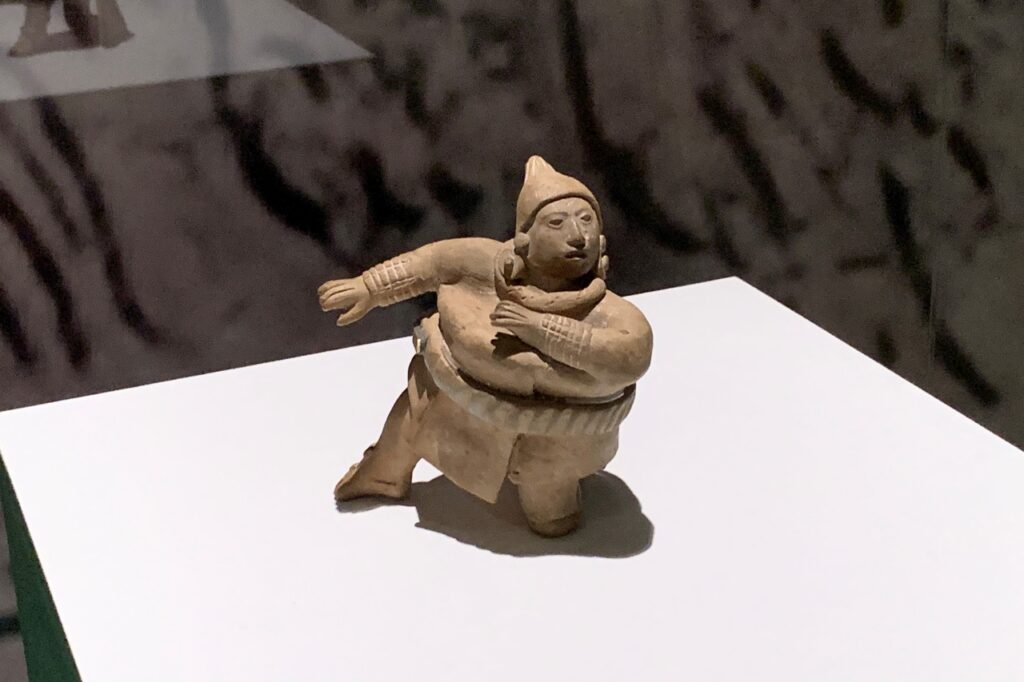
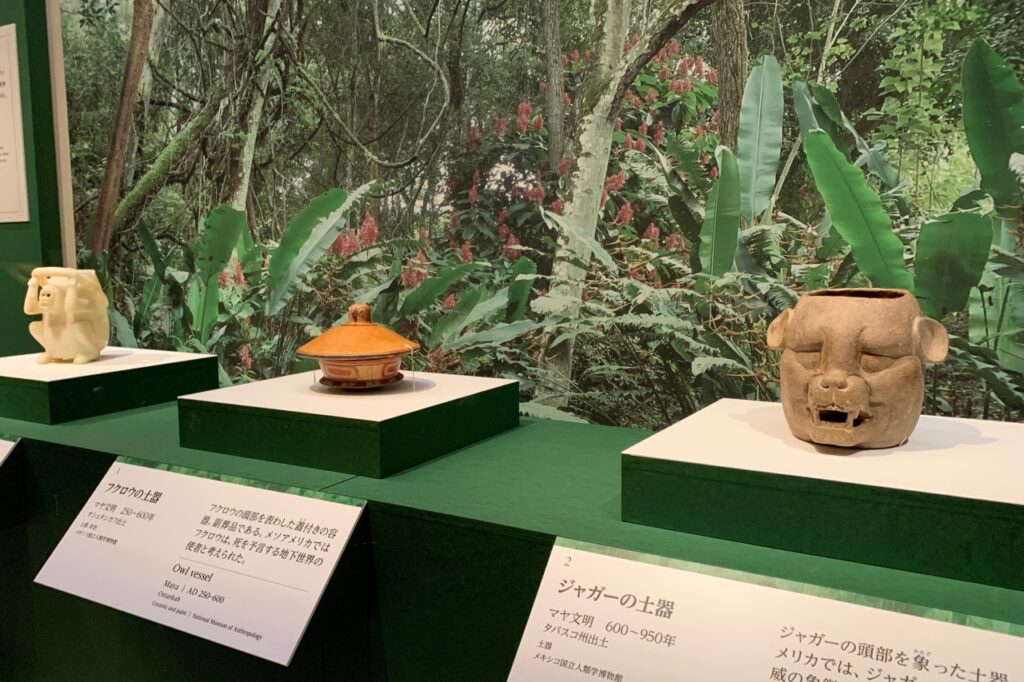
Here, the roots of Mesoamerica, which arose in the Gulf of Mexico around 1500 B.C., were the Olmec civilization, which inherited various elements to later Mesoamerican civilizations, such as the concept of sovereignty and many gods linked to rituals. The work "Olmec style stone figurine" that shows the existence of

Chapter 2 "Teotihuacan City of the Gods"
Chapter 2, "Teotihuacan: City of the Gods," deals with the Teotihuacan civilization, which flourished from 100 B.C. to 550 A.D.
Based on the cosmic view of the world that people believed in at the time, Teotihuacan is a state-led city centered on the "boulevard of the dead" and incorporating pyramids, ritual halls, palace-type buildings, and strict housing complexes. It was a planned city and a large religious city . Recent research has revealed that up to 100,000 people lived there, but the language and characters used have not been clarified, and it is still a civilization with many mysteries.
Here, we introduce the three pyramids representing Teotihuacan , the Pyramid of the Sun, the Pyramid of the Moon, and the Pyramid of the Feathered Snake, as well as works excavated from their surroundings.
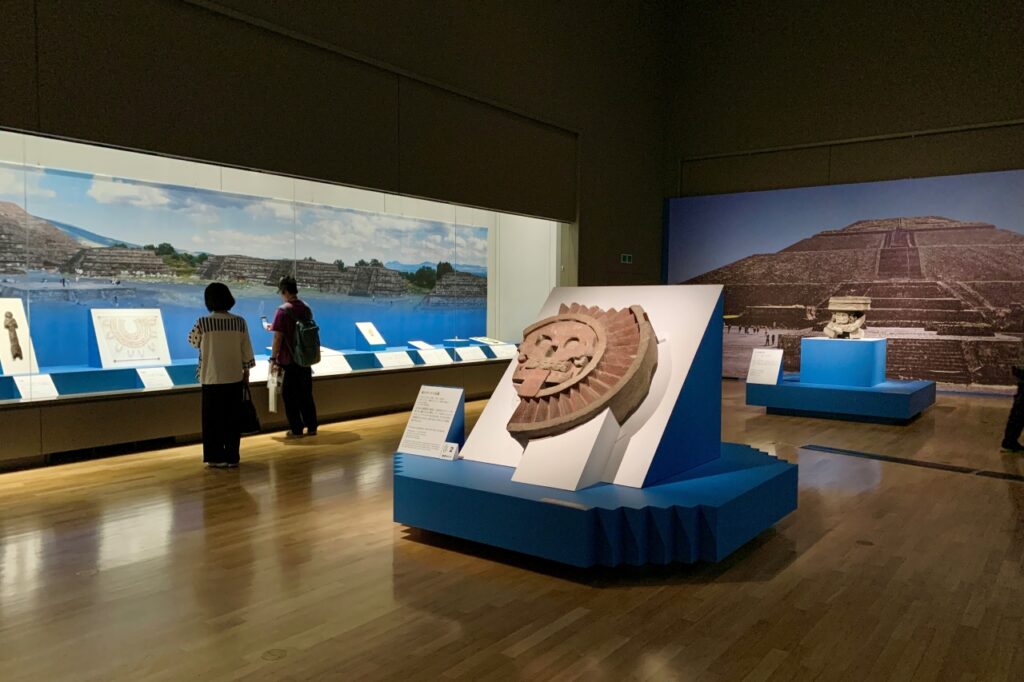
The "Death Disk Stone Sculpture" exposed in the center of the exhibition room was excavated from the plaza in front of the Pyramid of the Sun, the largest of the pyramids in Teotihuacan, during an excavation in 1964.
It is a stone sculpture with a diameter of more than 1m, and the motif that spreads radially like a halo and the tongue protruding from the mouth of the skull are impressive. In Mesoamerica, sunset is death and sunrise is rebirth.
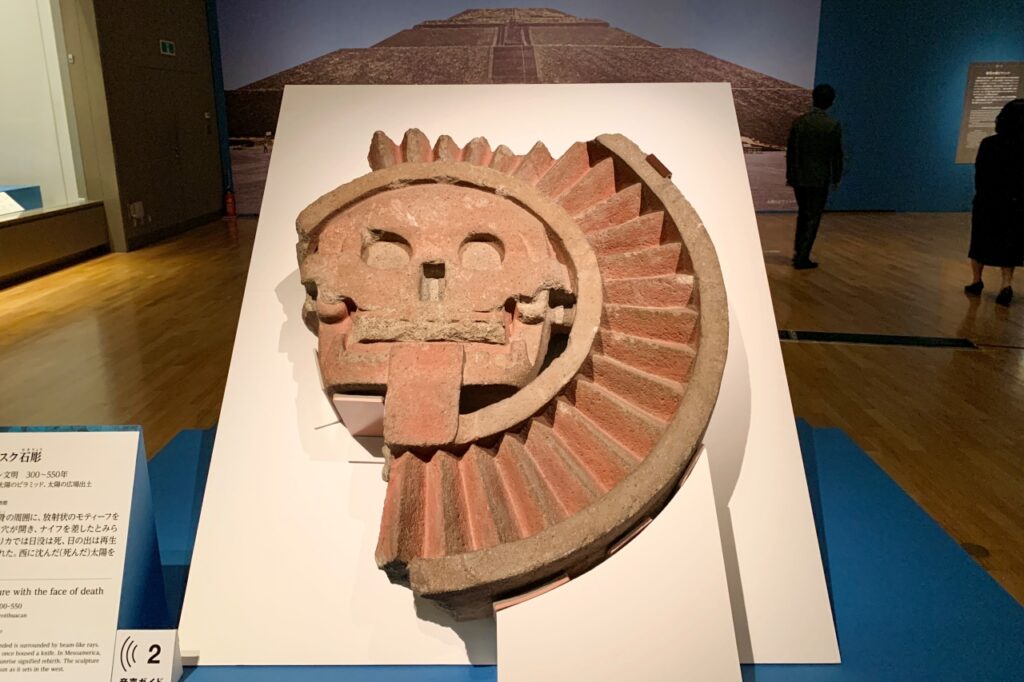
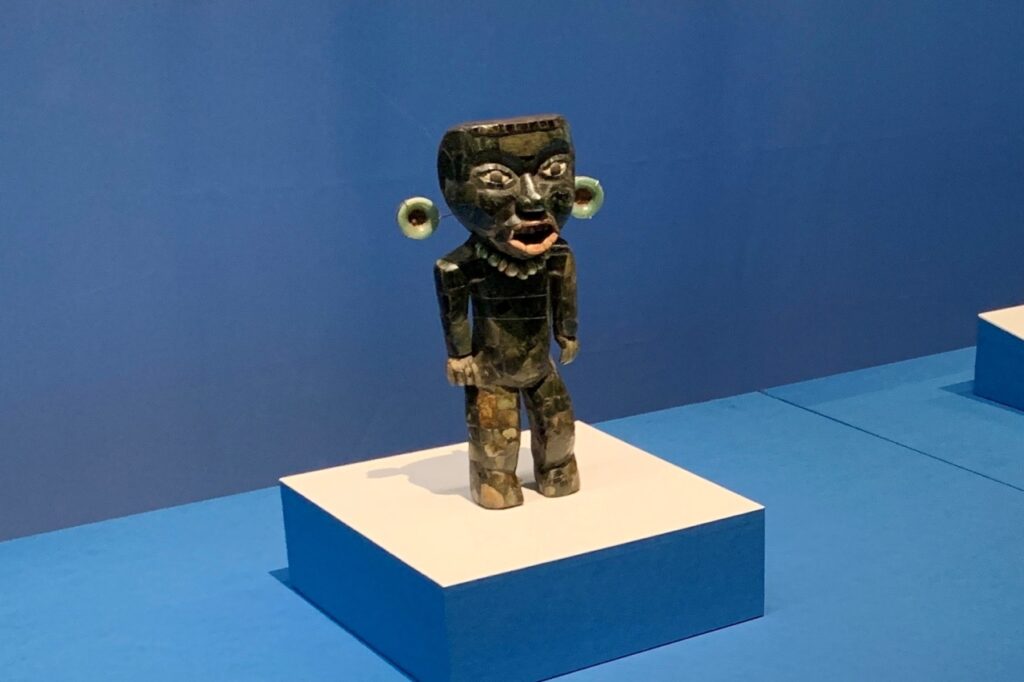
The exhibits that had a particularly strong presence were the Stone Sculpture of the Feathered Serpent God and the Stone Sculpture of the Sipaktri Headdress .
This is part of the large stone carving that covered the four walls of the Feathered Snake Pyramid, the central temple of the Citadel, a large ceremonial hall measuring 400m on a side. It is said to represent the headdress of the Feathered Snake God, which is a symbol of Venus and power, and the creator god, Shivakhtri, who symbolizes the beginning of time (calendar).
At the venue, the installation was devised so that you can see how these stone carvings protrude from the pyramid.
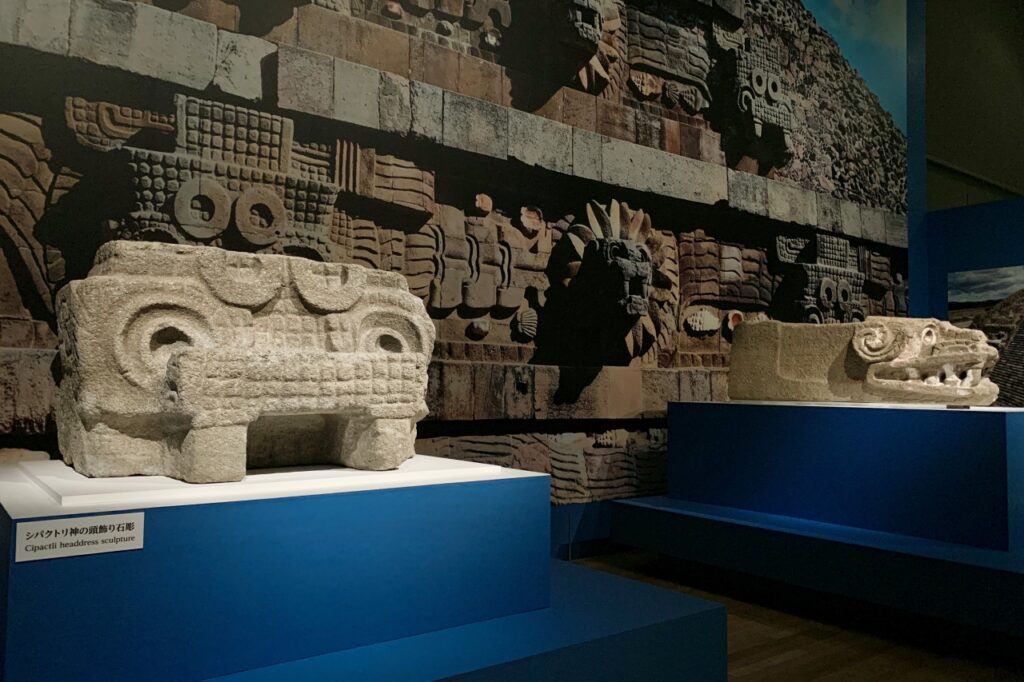
The feathered serpent god's wavy body is repeatedly carved with the motif of the Cipactri's headdress, so the entire Feathered Serpent Pyramid is the first monument in Mesoamerica to represent sacred kingship and coronation. It is thought that
Among the artifacts excavated from the 15m – deep, 103m-long tunnel beneath the Feathered Snake Pyramid, the trumpet, a musical instrument made from the tip of a snail shell, was eye-catching. This work has an iconography similar in style and content to that of Mayan religious centers, which is not found in Teotihuacan.
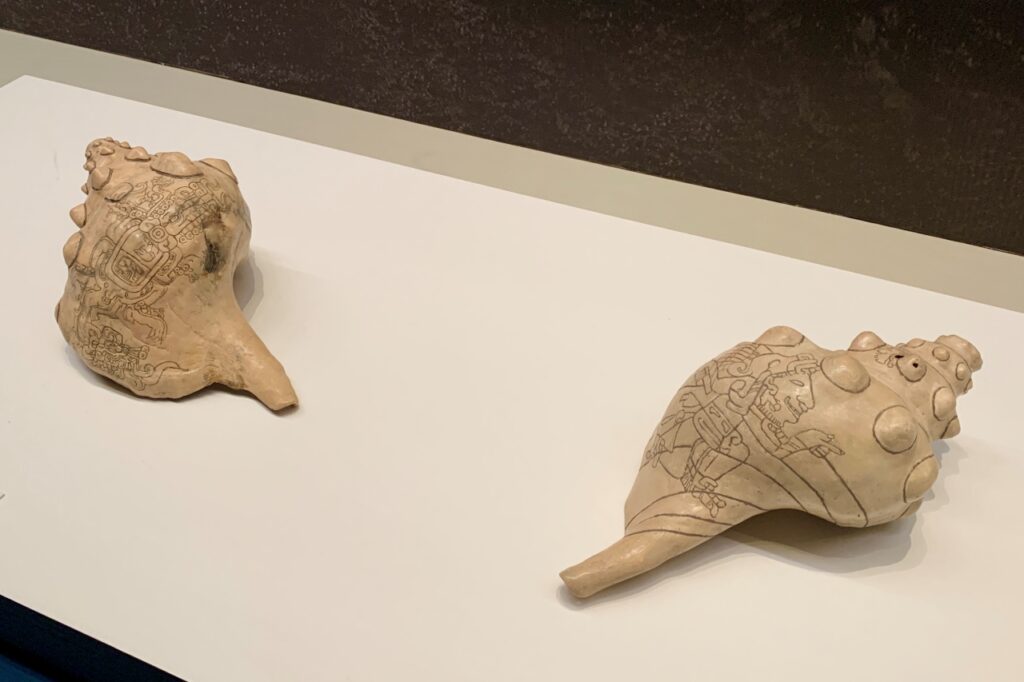

Buried in the burial body of the Teotihuacan dwelling site was an animal-shaped pottery with gorgeous decorations such as shells, which the excavator named "a strange duck". Since it was found with many shellfish products, it is thought that it was a grave goods related to shellfish traders who traded with the Gulf of Mexico.
Exhibits such as the "Trumpet" and "Bird Pottery" tell us that Teotihuacan was a multi-ethnic city with thriving trade and market economic activities.

In addition, the murals and earthenware that make you imagine life in Teotihuacan are also interesting.
Multicolored murals, such as the Storm God Mural , which is said to represent one of Teotihuacan's principal deities, the storm god, or Tlaloc, the rain god, are found in many apartment complexes and ceremonial facilities. It was
In addition, many incense burners excavated from the ruins of dwellings were made by rearranging various decorative pieces according to their purpose. The "incense burner" on display is thought to have been used for ceremonial requiems for dead warriors, based on motifs such as arrows and shields.

Chapter 3 "Rise and Fall of Mayan City-States"
Chapter 3, "The Rise and Fall of Maya City-States," introduces the culture and dynasties of the Mayan civilization, which flourished around the Yucatan Peninsula from around 1200 BC to the 16th century. This section is composed of the largest number of works in this exhibition.
It is said that the Maya established a dynasty with a distinct culture and form of governance around the first century AD. However, it has never been politically unified, and has formed a large network society through friendly exchanges such as trade between countless cities and the coming and going of diplomatic missions, and sometimes wars for supremacy. The excavated items convey various trends in the Mayan region.

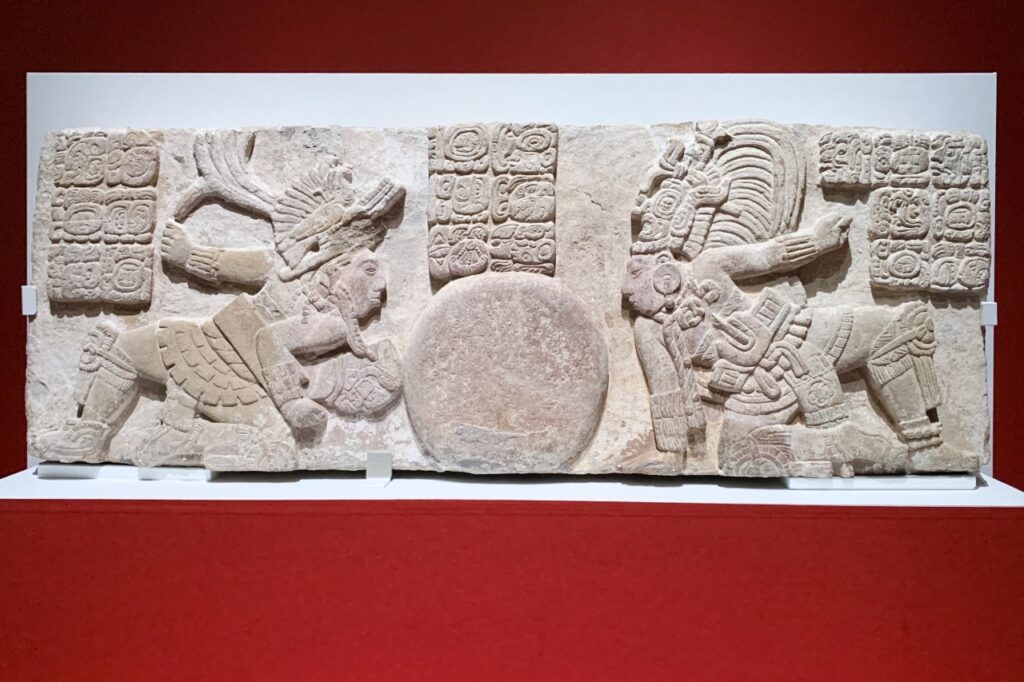
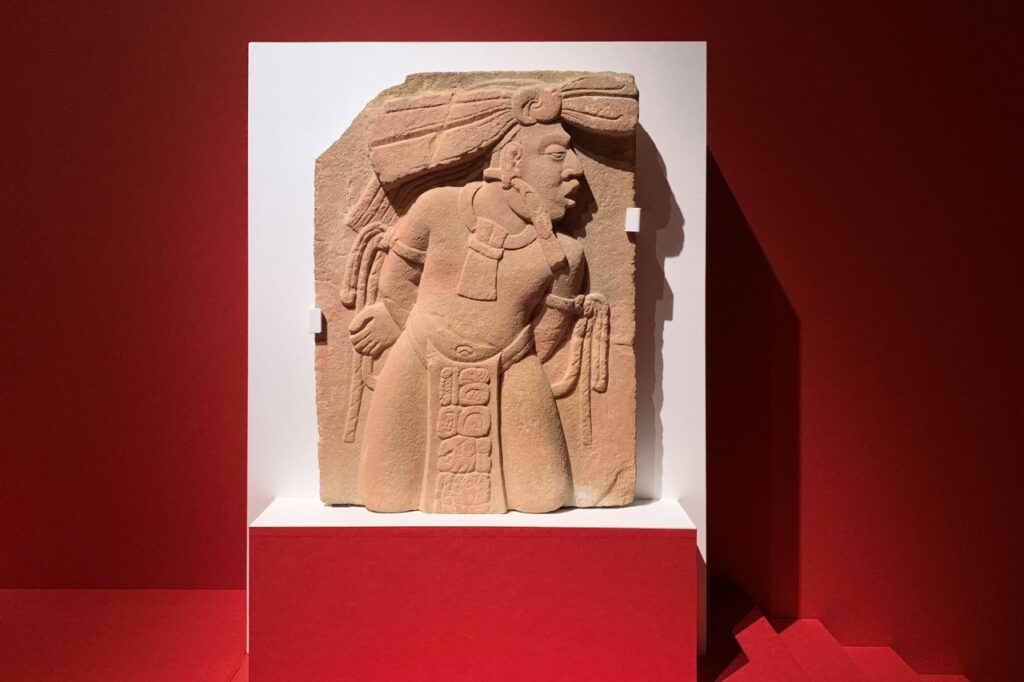
One of the Maya's forested cities is Palenque , a middle-sized city that prospered in the western region between 400 and 800 AD. In particular, the artifacts excavated from the tomb of the Red Queen (Reina Roja), which will be exhibited for the first time in Japan, is one of the highlights of this exhibition, which is famous as a masterpiece of dynasty art .
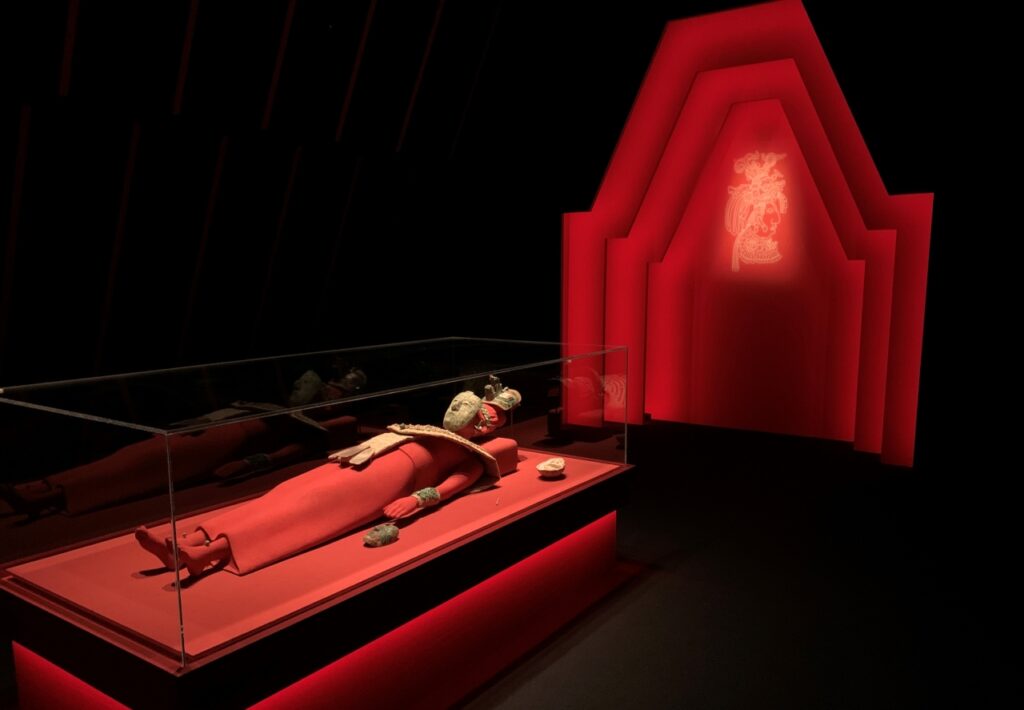
Palenque, the city of art, is known for its sophisticated architecture, sculptures and inscriptions, and its golden age was the reign of King Kinichi Hanab Pakal (615-683).
It is said that while King Pakal strengthened the influence of Palenque through diplomacy and warfare, he also focused on expanding the royal palace, making it one of the most magnificent buildings in the Mayan region. His body was placed in a mausoleum called the Temple of Inscriptions, which is said to have been designed by King Pakal himself.
The body, called "Red Queen (Reina Roja)", was found in 1994 in Temple 13 next to the Temple of Inscriptions. Its common name comes from the fact that it was buried covered with bright red cinnabar (mercury red). As a result of the investigation, it is highly likely that this person is Ish Tsakub Ahau, the wife of King Pakal.

At the venue, the 12 burial goods of the "Red Queen" were attached to mannequins to recreate the state of burial in a space inspired by the stone chamber of Temple 13. The "Red Queen's Mask" is made of small pieces of malachite, with obsidian for the eyes and white jadeite for the whites of the eyes.
Although it is not shown in the photograph, among the beautiful grave goods such as necklaces and crowns, there was a small, unremarkable "needle" quietly displayed next to the mannequin that caught my eye. Strange as it may seem, spinning and weaving is one of the activities that women of all social classes do, and the needle was also used by the "Red Queen" on a daily basis and was thought to be necessary in the afterlife. that there is
Not only do they dress up according to their status, but they also empathize with the life-size wish of the person himself or the people around him, who say, "I want to live without trouble."
Next to the reproduction exhibition, video materials of the excavation survey of "Red Queen" were also played.
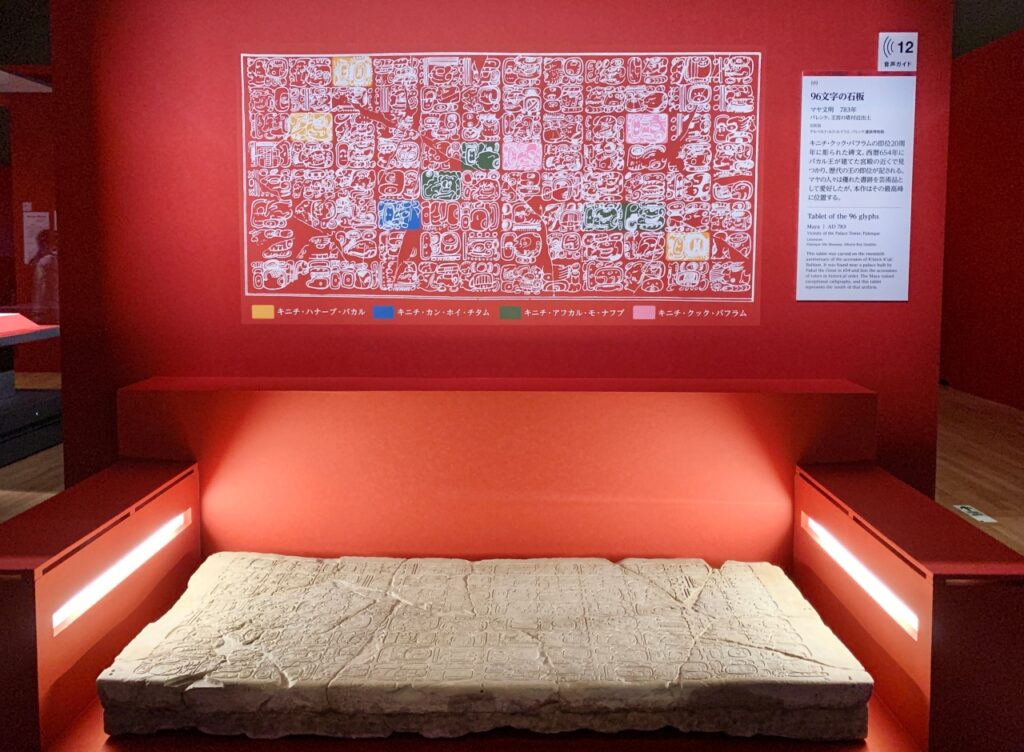
In addition, at the exhibition of the 96-character lithograph found in the royal palace of Palenque ruins, we were able to thoroughly appreciate the picturesque and beautifully shaped Mayan characters.
The Maya script is a mysterious language composed of logograms and syllabaries, but currently about 700 characters and various combinations that are said to be tens of thousands of weaves are being elucidated. People's deeds were thought to reproduce the deeds of gods and ancestors, so letters were mainly used to record the histories of kings and nations, as well as court ceremonies.
This work also records the accession of the kings of Palenque with exact dates.

Like in Japan, calligraphy was not only used to convey information, but was also loved as a work of art in the Maya.
After the decline of Palenque and many other cities, the excavated artifacts of Chechen Itza, which became the largest city in the Maya region in the northern part of the Yucatan Peninsula around 900, are also worth seeing.
Among them, "Charcoal statue" is a work that I felt the scariest of this exhibition after reading the explanation. On the belly of the statue there is something like a plate, in which it is possible that an offering, sometimes a heart taken from a human sacrifice, was placed…
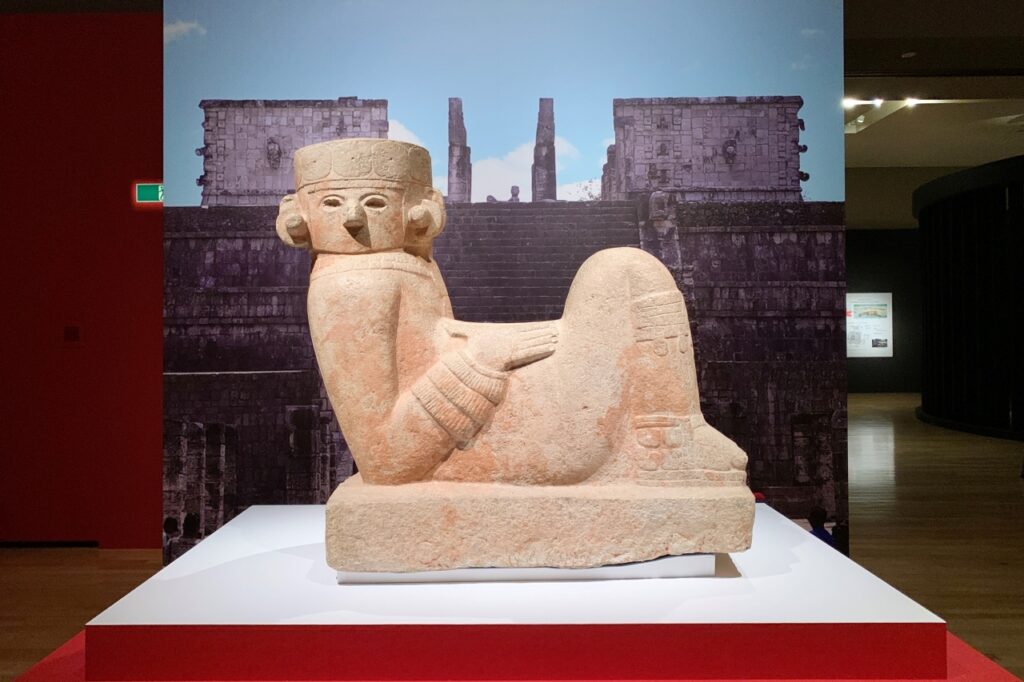
In this exhibition, there are many frightening keywords such as "sacrifice" and "human sacrifice." These peculiar practices have persisted in Mesoamerica for over 3,000 years, and modern sensibilities may raise eyebrows at their brutality.
However, it is not just an inhumane ritual act. All life forms are born and move through the work and sacrifice of the gods. This was due to the ethics of the indigenous peoples, who believed that principles must be maintained. There is a universal prayer to God and nature.
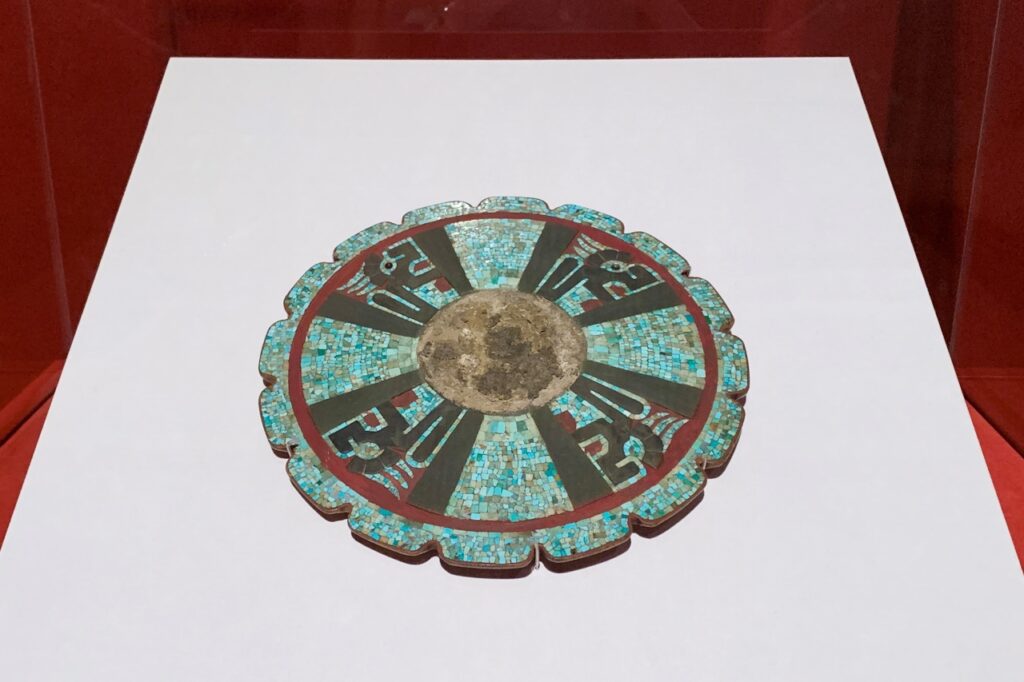

Chapter 4 "The Great Temple of the Aztec Tenochtitlan"
Chapter 4 "Temple of the Aztec Tenochtitlan" is a large city of the Aztec Kingdom of Tenochtitlan (present-day Mexico) founded in 1325 on an island in Lake Texcoco in the central highlands of Mexico by people whose mother tongue was Nahuatl , such as the Mexica. City) excavated items. With a population of over 200,000 at its peak, it prospered until it fell to Spain in 1521.
By the way, in the central highlands of Mexico, civilizations rise and fall in the order of Teotihuacan ⇒ Toltec ⇒ Aztec. The name "Teotihuacan", which means "City of the Gods" in Nahuatl, was named by the Mexica people of the Aztec kingdom who discovered the ruins.
The Aztecs, which strengthened their national power with military power and a tribute system, brought amazing developments in architecture and painting, especially sculpture. Tenochtitlan, where the Aztecs concentrated their wealth, is said to have created a creative environment unlike any other in history, with national and international artists sharing techniques, tastes and traditions.
The courageous "Eagle Warrior Statue" conveys a part of the creative beauty of Tenochtitlan.
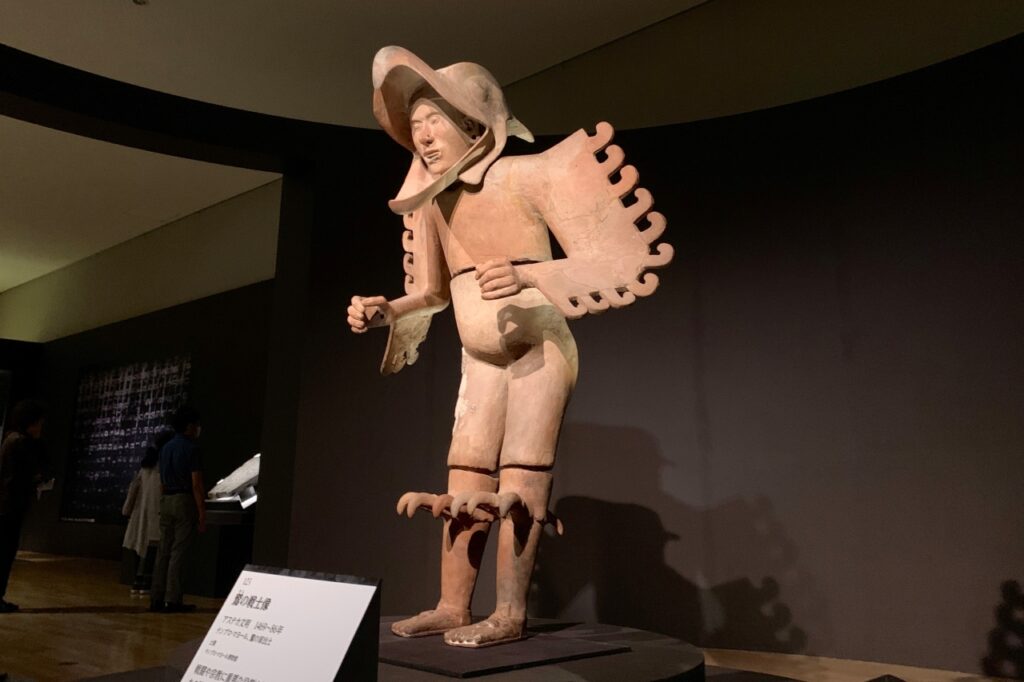
At the heart of Tenochtitlan stood the Templo Mayor, a pair of majestic pyramidal temples dedicated to Huitzilopochtli, god of the sun and war, and Tlaloc, god of rain and earth. This work was discovered in the "Eagle House" on the north side of the Great Temple. Life-size and powerful.
Many experts consider them to be the warriors of the "Eagle Legion" under the direct control of the king, who played an important role in battle and religion. It seems that there are still various theories that it represents the appearance of Lopochitori.
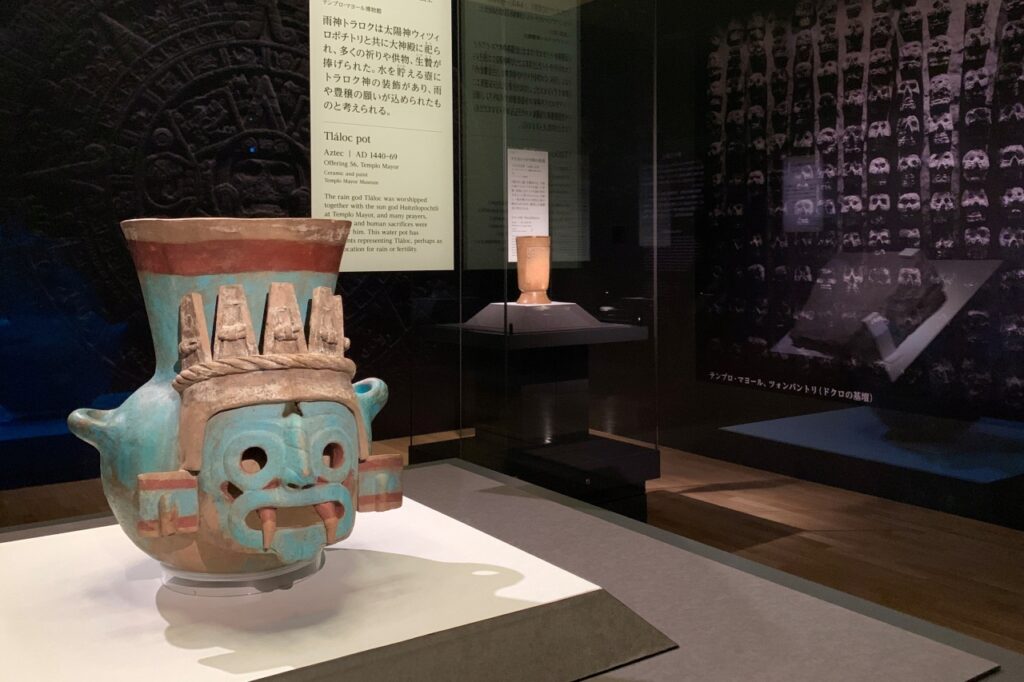
Many of the sculptures on display represented the gods worshiped by the Aztecs.
"Tralok God's Vase" is impressive with its bulging eyes and bright blue.
Mesoamerica, an agricultural society, is said to have had an obsession with controlling rainfall for centuries. Therefore, prayers, offerings, and child sacrifices were all devoted to Tlaloc, the rain god and 'giver' who provides everything that plants need to germinate.
It is believed that this work contains a wish for rain and a bountiful harvest, as the pot for storing water is decorated with the deity Tralok.
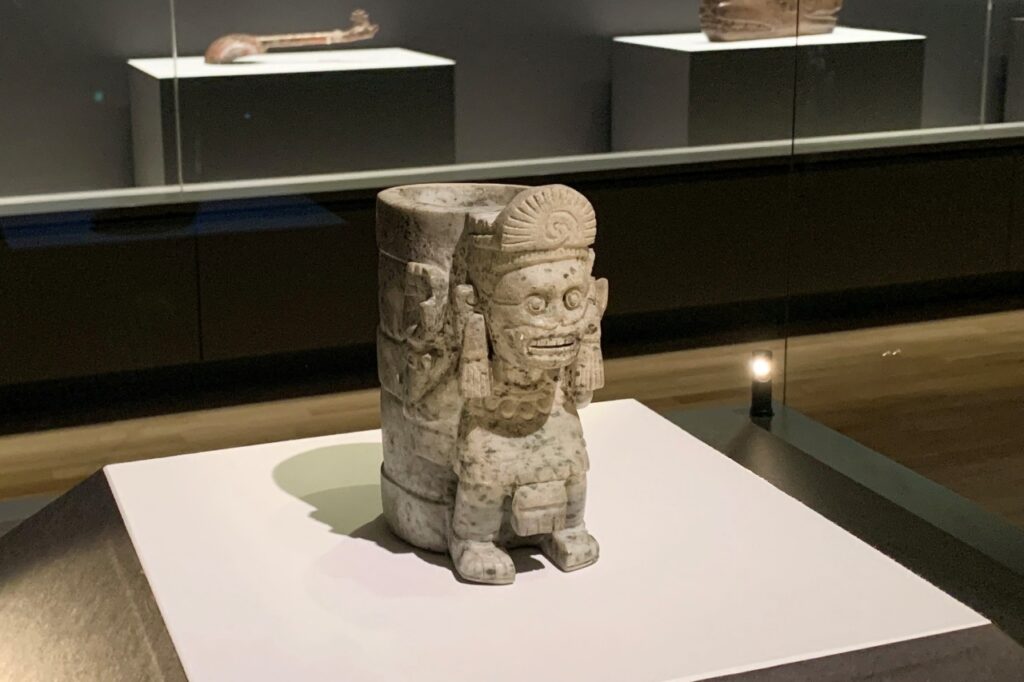
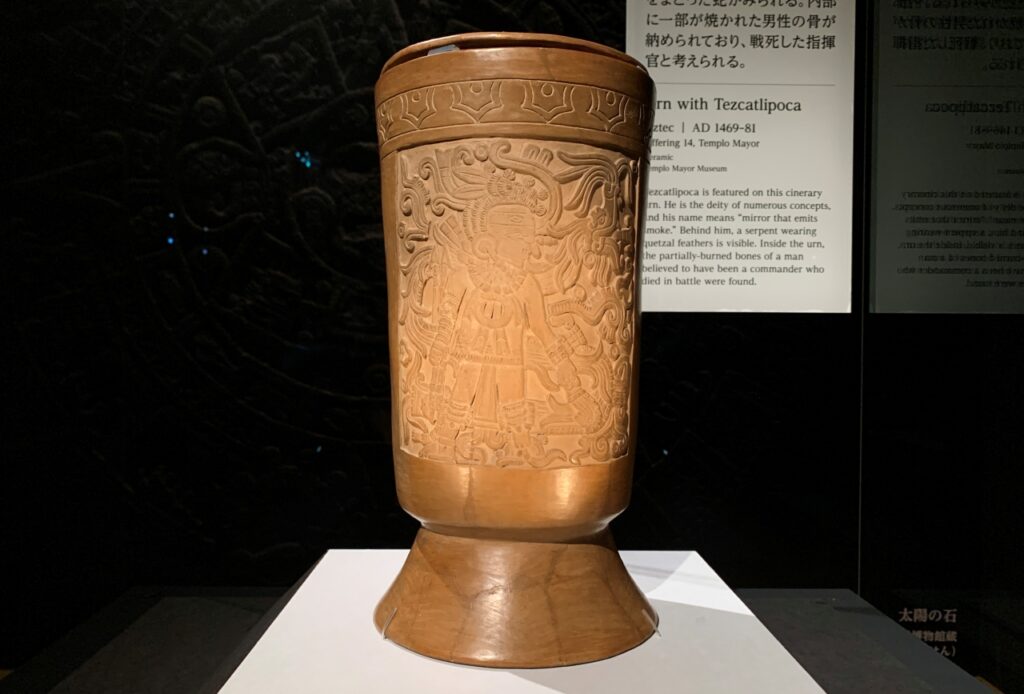
One of the exhibits is a "mask" made of green serpentinite, and it has a similar atmosphere to the "mosaic statue" introduced in the Teotihuacan exhibition in Chapter 2. In fact, it was a mask excavated from the ruins of Teotihuacan, polished by the Mexicans, and touched with eyes and earrings.
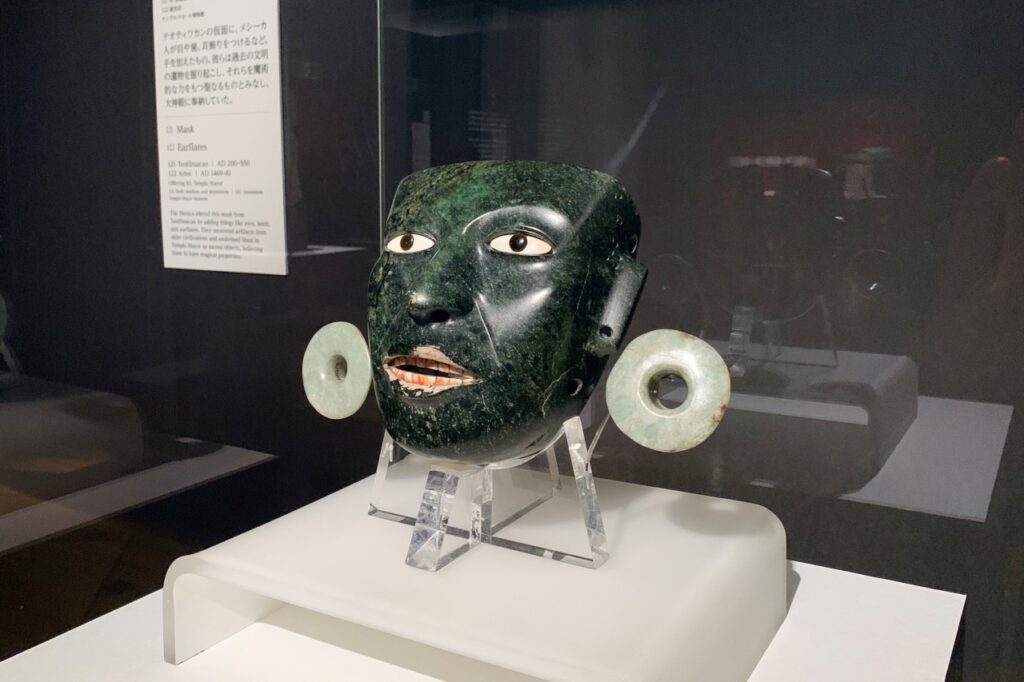
It is said that the people of the late postclassic period (1250-1521), including the Messikas, dug up past civilizations and dedicated them to their temples as sacred substances with magical powers. One of the interesting things about this exhibition is that you can feel these connections.
At the end of the exhibition, pendants, earrings, and scepter-shaped ornaments made of gold, which are rare in Mesoamerica, were exhibited all at once, showing the latest excavation results of Templo Mayor.
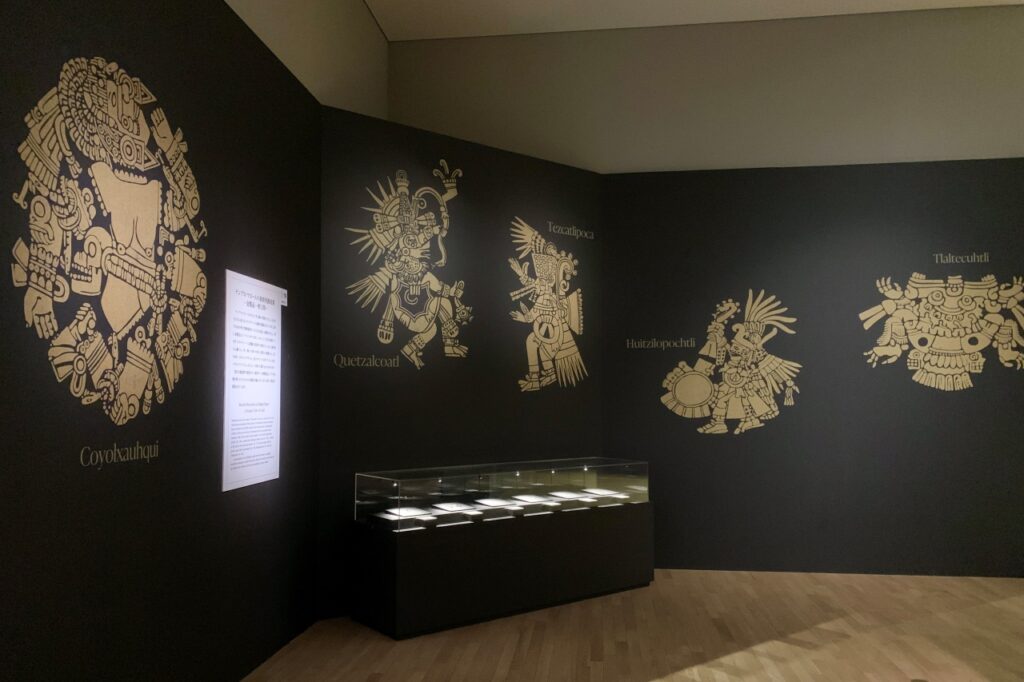
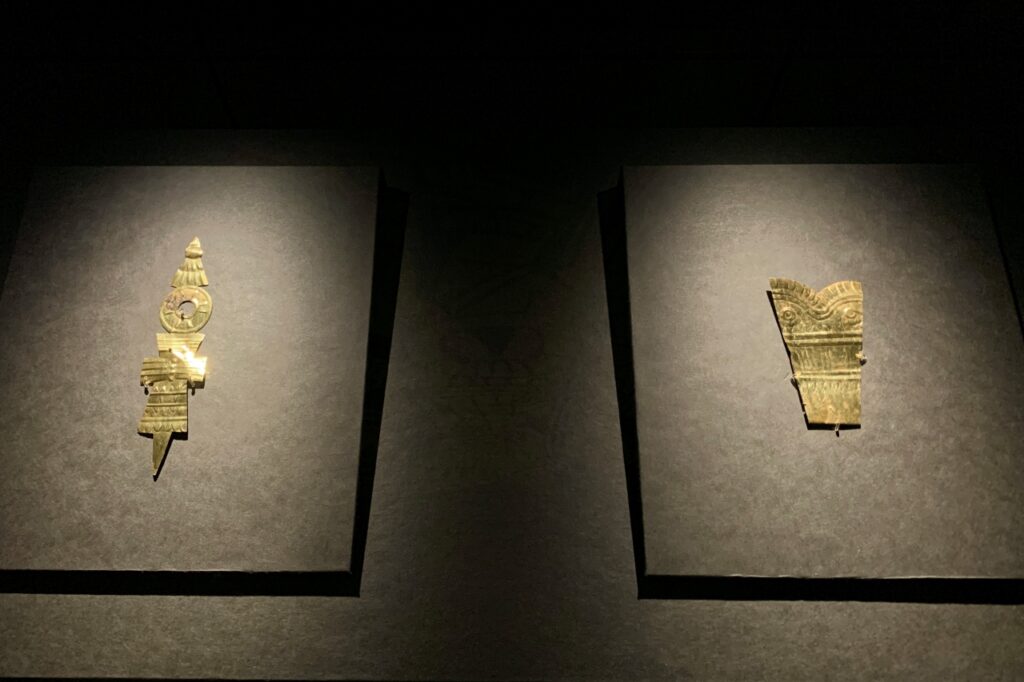
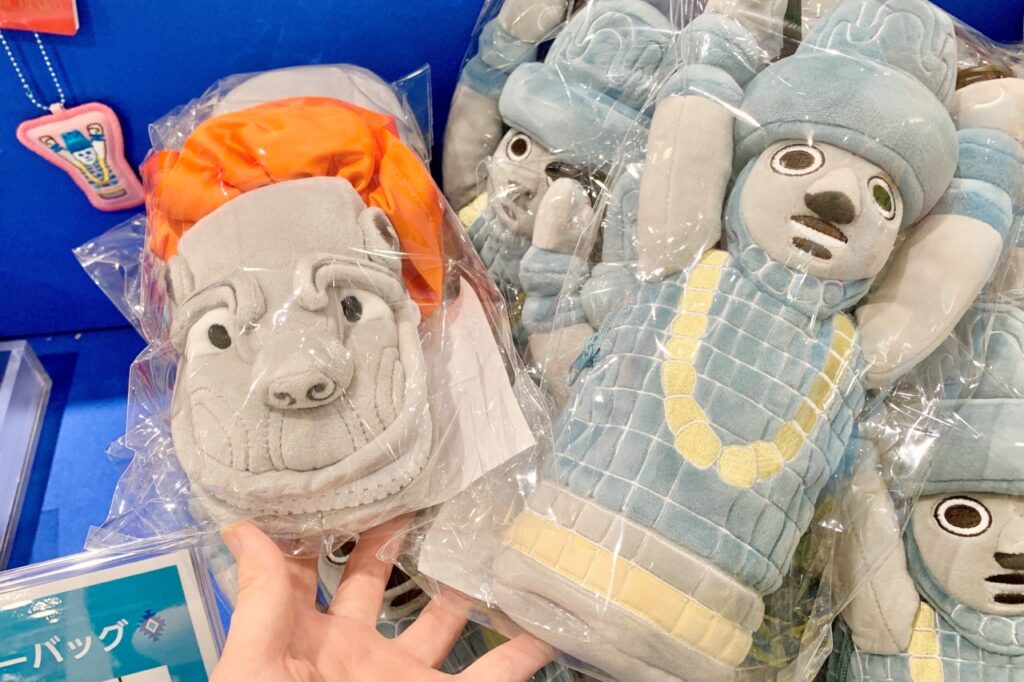
At the venue, we were particular about the production of the exhibition space, such as video materials that convey the charm of the ancient city ruins and realistic reproduction exhibitions, and we could feel the atmosphere of ancient Mexico just by walking. It is also a nice point that the distance between the exhibits is wide and it is easy to appreciate.
By the way, at present, all the exhibits in the venue are allowed to be photographed for personal use only. (There is a possibility that it will be canceled or changed in the future, so please see the information in the hall and the official website for details.)
The special exhibition “Ancient Mexico” explores the depth and charm of the cultural traditions of ancient Mexico, which are still passed down by the people living in the land. The event will be held until September 3, 2023 (Sun).
Overview of the Special Exhibition “Ancient Mexico: Maya, Aztec, and Teotihuacan”
| exhibition period | June 16th (Friday) to September 3rd (Sunday), 2023 |
| venue | Tokyo National Museum Heiseikan |
| Opening hours | 9:30 a.m. to 5:00 p.m.
*Saturday until 7:00 p.m. |
| closing day | Monday, July 18 (Tue) *Open on July 17th (Mon/holiday) and August 14th (Mon) |
| Viewing fee (tax included) | Adults ¥2200, University students ¥1400, High school students ¥1000, Junior high school students and younger free
*For details, please see the ticket page on the official website. |
| organizer | Tokyo National Museum, NHK, NHK Promotions, Asahi Shimbun |
| inquiry | 050-5541-8600 (Hello Dial/9:00 a.m. to 8:00 p.m., open all year round) |
| Exhibition official website | https://mexico2023.exhibit.jp/ |
*The content of the article is as of the interview date (June 15, 2023). Please check the official website for the latest information.
Article provided by: kokosil Ueno


